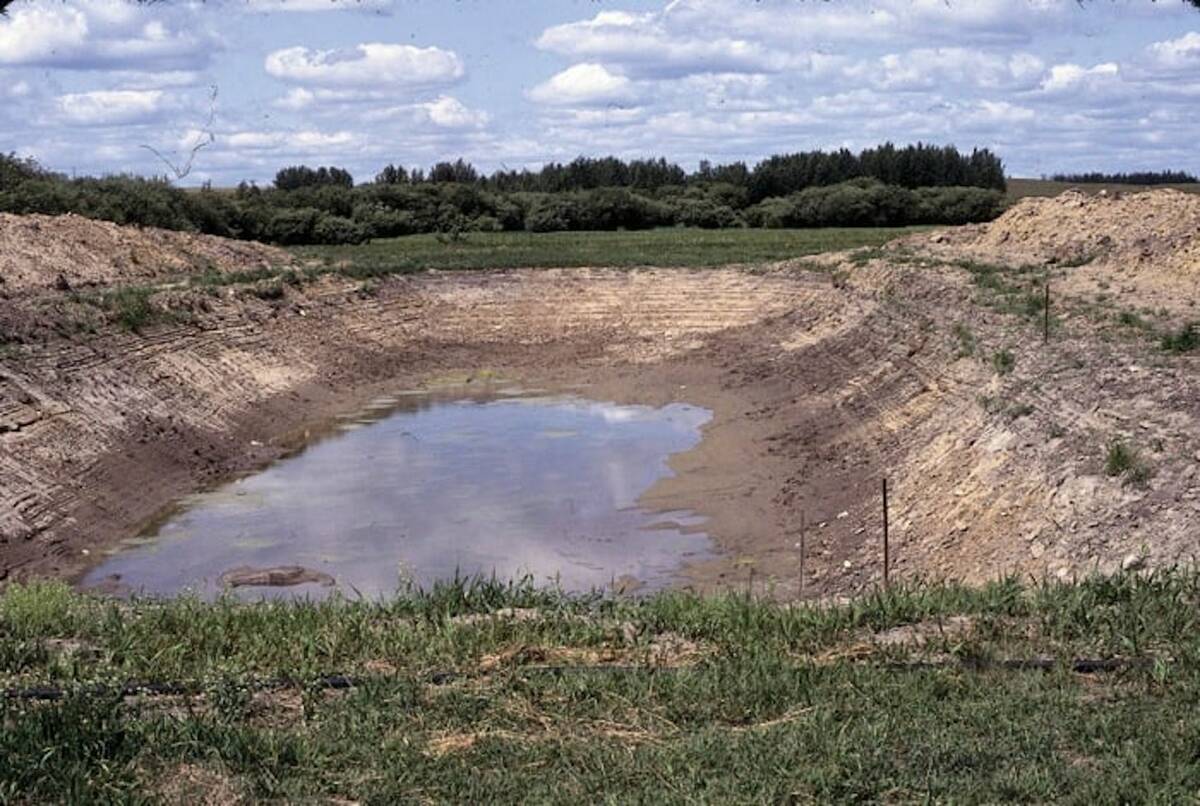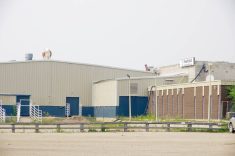WINFIELD,B.C.- Call it a hair-brained scheme.
When hair stylists George and Trudy Heiss gave up their Edmonton salons to become Okanagan grape growers, they might have stopped themselves if they had known what they know now.
Tramping through fields of soft, brown dirt, supervising the hand planting of several thousand new grape plants, Trudy stopped long enough to talk about their 20-year experiences in nurturing and experimenting with vines or doing battle with government regulations.
She says if they’d known how much work was involved, they probably would have remained hair stylists.
Read Also

Dry summer conditions can lead to poor water quality for livestock
Drought conditions in the Prairies has led to an decrease in water quality, and producers are being advised to closely monitor water quality for their animals.
“We weren’t farmers, but we had to carry on once we started,” she said.
Today, their back-breaking work has been rewarded with international accolades.
International recognition
Their wine earned two gold medals and a bronze at a recent international wine competition.
George and Trudy started growing grapes in 1971 for large commercial wineries. They starting making their own wine in 1976.
Their son, George Jr., who studied winemaking for five years in Germany, is the family winemaster.
Located on the slopes of the Okanagan Lake near Winfield, the Gray Monk Estate Winery and Vineyards opened in 1982.
Gray Monk’s original production limit set by the government was 30,000 gallons of sales in the province. This year, they’ll make about 76,000 gallons of mostly white, dry wine. About 40,000 gallons remain in British Columbia.
The regulations governing their business can be trying for many B.C. producers, who claim the province restricts expansion.
“At Gray Monk we could sell twice what we make because we run out of most varieties,” Trudy said.
“The demand has been absolutely phenomenal.”
Forty percent of the wine sales occur through their store on the farm. A large percentage is also sold through liquor board stores.
“We’re at a big crossroads in the industry right now. Things are going to change,” she said.
The government has proposed a wine industry strategic planning committee. She is watching with caution to see how changes in pricing, distribution regulations or production quotas might affect them.
To become vintners in B.C. there is a three-tiered licensing program.
The first is a commercial licence which allows a company to buy domestic or imported grapes, bottle them and sell the wine as a product of Canada. This includes companies like Andres or Mission Hill.
The estate winery licence was established in 1979. This is for smaller, family-run wineries on vineyards producing more than 10,000 gallons of 100 percent B.C.-grown grapes. The family is expected to live on the estate.
Then there is a licence for farmgate wineries. It must be at least three acres and is allowed to make between 2,000 and 10,000 gallons per year.
Since the Canada-U.S. free trade deal and the North American Free Trade Agreement, many B.C. grape growers were left with varieties no one wanted. A massive, government-sponsored vine pullout program resulted in two-thirds of B.C. vineyards being stripped.
Improved varieties
Now farmers have returned to the grape business with new and better plant varieties brought in from France and Germany.
In grape growing, everything is done by hand. Each plant is pruned and trained to grow downwards on a wire trellis. Each fruit cluster requires five leaves for photosynthesis to ensure the right amount of sugar. And each cluster is hand picked.
“The quality is made in the field. The winemaker can’t make it better. If he has a good product to work with, then he can make a good wine,” Trudy said.
The proper climate also influences wine quality.
If the weather doesn’t co-operate the Heisses coax the plants along. Grapes grow best in temperatures of about 28 to 32 C. Beyond that, the plants show heat stress.
The Heisses test their soil every year and fertilize with phosphorus and other micro-nutrients. They don’t spray for fungus or insects because they have an integrated pest management program and don’t want to kill good insects like ladybugs.
A good wine grape has juice, skins and seeds compared to table grapes that have little juice, no seeds and a fleshy inside.
The grape harvest starts the last week of September when other Okanagan fruits are finished. That allows the Heisses to hire apple-picking crews, which must handle the grapes quickly and gently. The vines yield about six tonnes per acre.
Grapes must not sit in storage bins for long and frost is almost always fatal.
The Heisses start making wine immediately with some vintages taking as long as a year to ferment properly. They carry out their own bottling on the farm as each wine is ready.

















